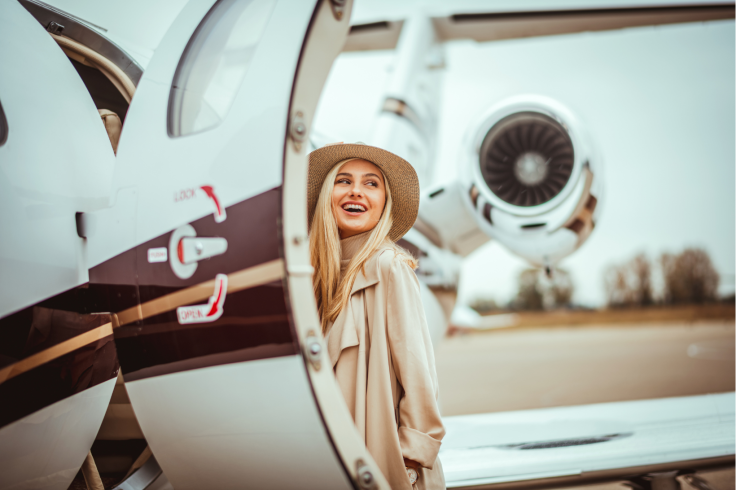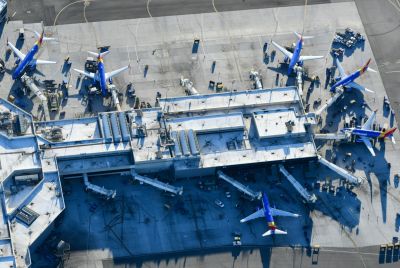Long-Haul Flight Survival Guide: What Frequent Flyers Pack That Economy Passengers Miss

Seven hours into a twelve-hour flight, you look like you've aged a decade, while someone three rows ahead just woke from a nap, looking suspiciously refreshed. Same cramped seats, same stale air, completely different result. The gap comes down to knowing what actually works at 35,000 feet—not what travel blogs suggest, but what people logging 100+ flights yearly pack in their carry-ons.
Cabin Air Is Worse Than You Think
Aircraft cabins maintain humidity levels between 10-20%. The Sahara Desert hits 25%. You're flying through conditions drier than one of Earth's most hostile environments, which explains the mummified feeling after landing at Singapore Changi.
Most passengers think chugging water fixes this. Water addresses internal hydration, but your skin keeps losing moisture to air that's stripping humidity from everything.
Mucous membranes dry out first, making you more susceptible to whatever viruses are recirculating through the cabin. Contact lenses become tiny torture devices. Lips crack. Hands look twenty years older by the time you clear customs.
Casual travelers show up with a small bottle of hand cream and wonder why they still feel terrible. Frequent flyers understand you need to create an actual moisture barrier before that air gets to work on you.
The Effective Carry-On Strategy
Heavy-duty moisture barriers beat regular lotions: Lightweight moisturizers evaporate in cabin air within an hour. Thick, oil-based formulas actually stay on your skin and do their job. CBD body butter keeps showing up in frequent flyer kits because it's dense enough to handle desert-level dryness. Apply it to hands, elbows, face—anywhere exposed—before boarding, not after you've already turned into beef jerky. Slathering on moisturizer three hours into the flight is damage control. Applying it before you board is prevention.
Solid products dominate smart packing lists: They're denser, don't count against liquid limits, and perform better in low humidity. Solid cleansers, thick balms, concentrated formulas. Anything that comes in a jar instead of a pump bottle probably works better on planes.
Electronics worth carrying: Skip the gadgets. One external battery with enough juice for three full phone charges. Wired headphones as backup because Bluetooth murders battery life. Universal adapter if connecting through multiple regions. These basics rescue you when you're stranded at Dubai airport at 2am, phone dead, boarding pass locked behind a QR code you can't reach.
Sleep Strategy Without the Expensive Neck Pillow
Those fancy memory foam neck pillows mostly disappoint. What actually works? Regular travel pillow jammed between head and window, plus a large scarf. The scarf pulls triple duty—blocks light, adds warmth when cabin temperature inevitably drops, and works as lower back support.
Window seats give you control over the shade and something solid to lean against. Aisle seats mean getting bumped by every service cart and every passenger staggering to the toilet. For flights over eight hours, window wins despite the bathroom access trade-off.
Arrival Timing Beats Everything
Frequent flyers don't just survive the flight—they engineer their arrival. Booking flights that land in the early evening rather than 6am reduces jet lag recovery time significantly. Your body handles staying awake a few extra hours better than forcing itself to be conscious twelve hours early.
For Europe to Asia routes, westbound flights cause less disruption than eastbound. For transatlantic routes, overnight departures beat daytime ones for most travelers. Airlines charge differently for these patterns, but the comfort difference usually justifies the premium.
This matters more for work trips than holidays. Landing at 9pm gives you one night to adjust before meetings start. Landing at dawn means you're fighting through that first day in a semi-functional fog.
The Three-Hour Window After Landing
Stay awake until at least 8pm local time. Wander the airport aimlessly. Take the scenic route to your hotel. Find a park. Whatever keeps you upright and alert until a normal bedtime.
Natural light resets the circadian rhythm faster than any pill. Twenty minutes outdoors beats melatonin for jet lag, though using both works better than either alone.
Your skin also needs aggressive recovery after landing. Cabin air damage doesn't reverse immediately—it requires intentional rehydration. What you do that first evening matters more than three days of skincare routines later.
Most jet lag guidance fixates on sleep patterns while completely ignoring skin damage. Your face might not scream for attention like your exhaustion does, but the dehydration is legitimate and builds up over time.
© Copyright IBTimes 2025. All rights reserved.





















